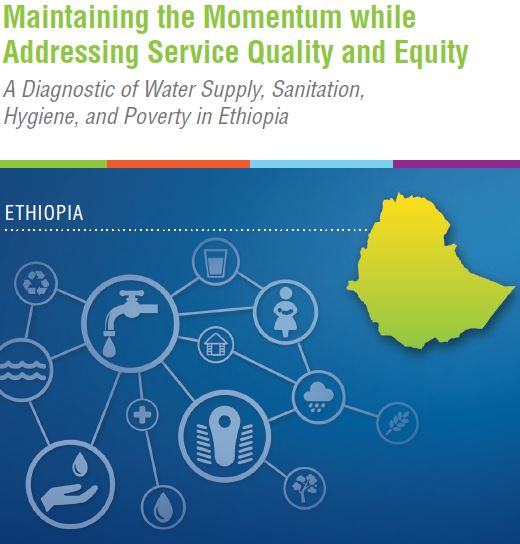Maintaining the Momentum while Addressing Service Quality and Equity A Diagnostic of Water Supply, Sanitation, Hygiene, and Poverty in Ethiopia SERIES Public Disclosure Authorized Public Disclosure Authorized Public Disclosure Authorized Public
The GoE has been successful at linking the decentralized generic service delivery machinery it has put in place with the sector policy direction, plans, and capacity to rollout basic WASH services at an industrial scale. This has been done with strong country leadership that directs both domestic public and overseas aid resources well with basic, public access WASH services (nonrivalrous, nonexclusive goods). However, when WASH services have added value and a private dimension (rivalrous and exclusive goods), progress on implementing the policy direction, particularly on cost recovery, has been limited and the sector outcomes regressive, with wealthier households disproportionately capturing the benefits of public expenditure. The rollout of basic WASH services has been equitable across wealth groups though albeit less equitable across livelihood types. Basic water supply services in rural areas include public water points (protected wells, springs, and boreholes). In the case of sanitation and hygiene this has been through knowledge disseminated from health extension workers across the country. The challenge for basic WASH services will be to improve quality and functionality while achieving universality. Without making these shifts, the contribution of WASH services to improving key health indicators, such a reducing diarrhea and stunting, will not be realized. In the case of rural water supply there are two priorities. First, to ensure that rural water services deliver their potential health benefits, water quality needs to be improved. Second, rural water supply needs to deliver on the economic promise of freeing people’s time by bringing services closer to peoples’ homes, and do so reliably by addressing mechanical functionality. This, in turn, will increase demand for water quantity, which requires more systematic approaches to water resource assessment and monitoring both to respond to the increase in demand and to reduce vulnerability to extreme climate events.
